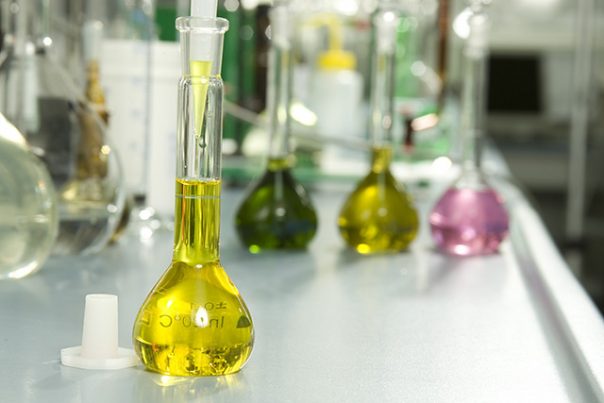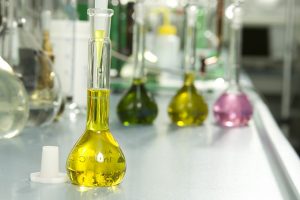
Glyoxylic acid sources, health risks
Saturday, October 28, 2017 by Jhoanna Robinson
http://www.naturalpedia.com/glyoxylic-acid-sources-health-risks.html

Glyoxylic acid, which is also called oxoacetic acid, is an organic compond that is both an aldehyde and a carboxylic acid. It is a liquid chemical with a melting point of -93 centigrade and a boiling point of 111 degrees centigrade.
Glyoxylic acid is an agent of the glyoxylate cycle, which allows organisms to transform fatty acids into carbohydrates. The conjugate base of glyoxylic acid is known as gyloxylate, which is the byproduct of the amidation process in biosynthesis of several of several amidated peptides.
The glyoxylate cycle is a metabolic pathway that occurs in plants and several microorganisms such as Escherichia coli and yeast, in vertebrates including humans, and in insects.
Being the simplest dicarboxylic acid, it is a potentially toxic chemical which is synthesized commercially and is also naturally-occurring as a salt in many plants. It forms two series of salts: a soluble species (with iron, lithim, potassium, or sodium) and an insoluble species (with calcium or magnesium).
Glyoxylic acid is used in the manufacture of paint, stain, and varnish removers; ceramics; and rust and ink stain removers. It also serves its purpose in rare-earth processing, making glucose from starch, bleaching, chemical synthesis, general metal and equipment cleaning, leather tanning, photography, printing and dyeing, process engraving, textile finishing, and wood cleaning.
The National Insitute for Occasional Safety and Health calculated that around 4,281 workers (2,045 of whom are female) are potentially exposed to glyoxylic acid in the United States.
Harmful effects that can be caused by glyoxylic acid
Glyoxylic acid is a major skin, eye, and mucous membrane irritant. It can cause chemical burns of the mucous membranes, resulting in them getting a white discoloration, and corneal damage.
Glyoxylic acid is bad for oral health. It brings about laceration and ulceration of the oral and pharyngeal cavities, and glossitis, or the inflammation of the tongue. It can also cause hypocalcemia, which is indicated by low calcium levels in the blood serum, and is characterized by cramps, paresthesia or tingling and prickling sensations, increased deep tendon reflexes, and muscle twitching.
In extreme cases, glyoxylic acid can result in hypoxia, or the deprivation of adequate oxygen supply at the tissue level.
Body systems harmed by glyoxylic acid
Glyoxylic acid is bad for the cardiovascular system. It can cause angina pectoris, or chest pains that are symptomatic of coronary heart disease, hypotension or low blood pressure, arrythmia, and hypovolemic shock, which is a condition in which severe blood and fluid loss render the heart unable to pump any more blood.
Glyoxylic acid is bad for the excretory system. It is said to cause hyperoxaluria or Bird’s disease, which is characterized by the excessive urination of oxalate, causing calcium oxalate kidney stones (renal calculi) and renal tubules to form in the body, resulting in renal failure or renal injuries such as elevated serum creatinine, hematuria, and oliguria or the production of unusually small amounts of urine. It can also cause liver failure.
Glyoxylic acid is bad for the digestive system. Vomiting and diarrhea may follow after being exposed to the chemical. It can also cause epigastric pain and gastrointestinal hemorrhage and perforation.
Glyoxylic acid is bad for the respiratory system. It can cause laryngeal edema or an infection of the larynx, and, if worse comes to worst, respiratory depression.
Where to learn more
Summary
Glyoxylic acid is bad for oral health.
Glyoxylic acid is bad for the cardiovascular, excretory, digestive, and respiratory systems.
Glyoxylic acid is a major skin, eye, and mucous membrane irritant.
Sources include:
Tagged Under: Tags: glyoxylic acid






